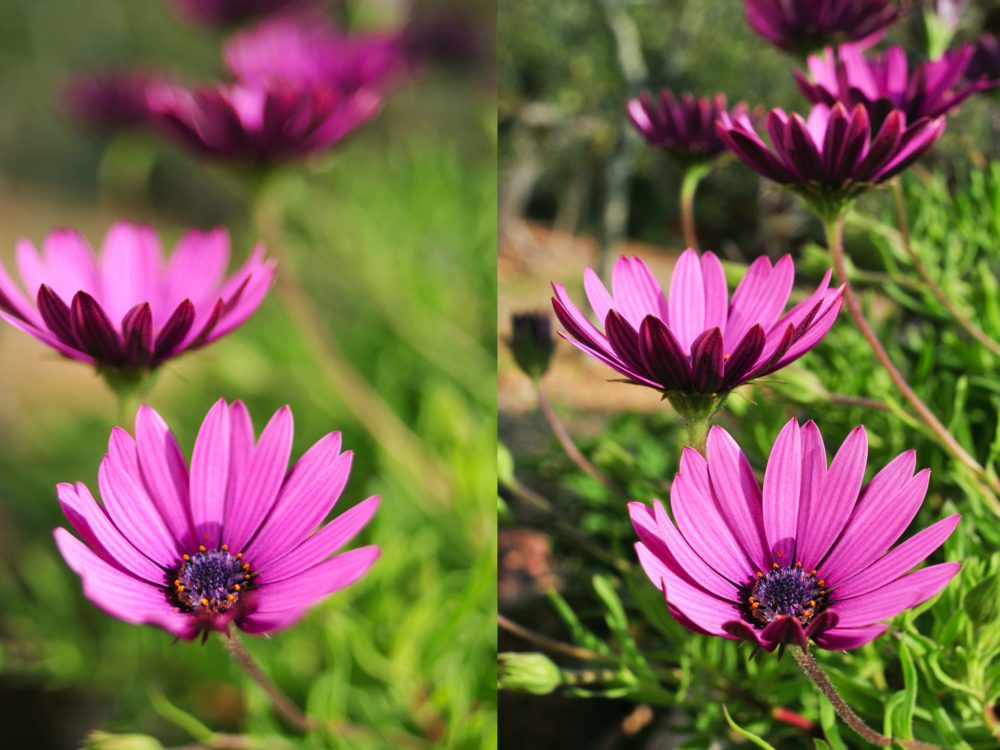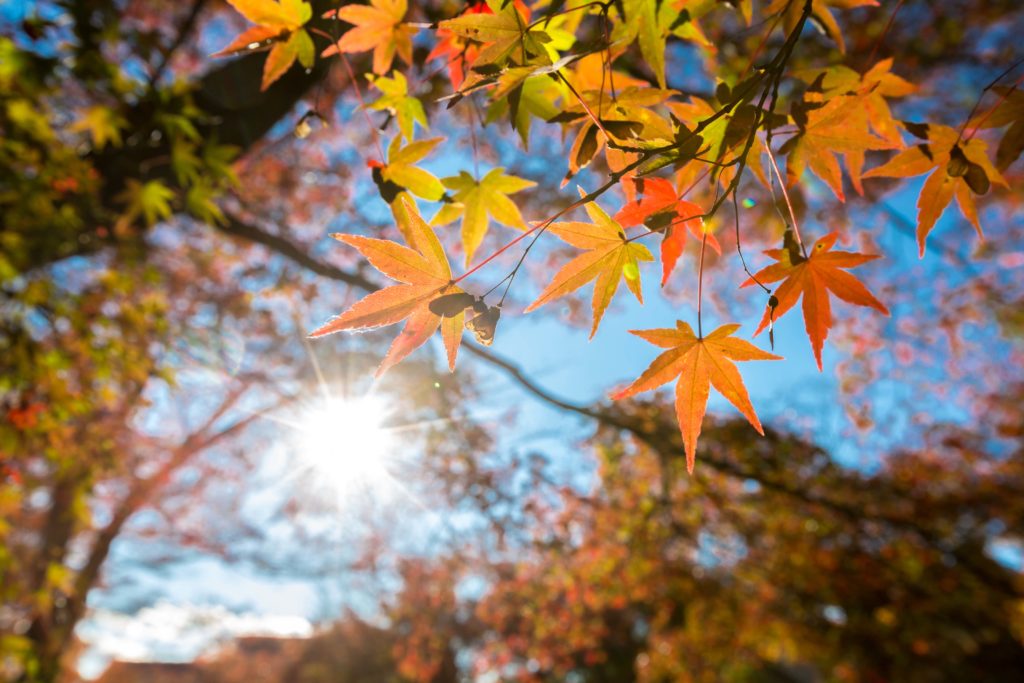
3 Simple Steps for Adjusting Your Camera’s Depth of Field
- Adjust Aperture Settings on Your Camera
- Change the Distance Between the Camera and Subject
- Understand the Focal Length of Your Lens
Sometimes, you may want a clear, crisp subject and blurred background. In other cases, you may want to have your entire picture in sharp focus. For beginner photographers, depth of field (DOF) is often a very new concept.
What is Depth of Field?
By definition, depth of field is the zone of sharp focus within a picture. In every photo you take, there will be focused areas in front of, and behind, your subject.
When the area of focus is small, this is called shallow depth of field. Photos with much larger areas in focus have deep depth of field. You can control whether your photo has shallow depth or deep depth of field with camera settings and choice of lens. The distance between your camera and your subject also plays a role.
Usually, you can identify an image with shallow depth of field because it has a soft or blurred background. In deep depth of field photography both the background and foreground appear sharp and clear. When should you consider shallow depth of field vs. deep? Often, photographers use shallow depth of field when taking a portrait. This puts the subject in clear focus while minimizing the background. Remember this concept when you are styling portrait photo shoots.
Also, shallow depth of field can work well in animal photography if you want to distinguish your animal subject from its natural environment. In sports photography, using a shallow depth of field can let you capture a close-up of an athlete while blurring out a busy background.
Deep depth of field is common in landscape photography. You can capture an expansive scene in clear focus to show as much detail as possible. Use a deep depth of field in other situations where you want a clear, crisp image with lots of detail, such as street photography or urban photography.
Also, you can take a mid-depth of field photo. With mid-depth of field, both the foreground and background are out of focus, with the subject in clear focus in the middle of the image.
Three main factors affect the depth of field in an image. These factors are aperture, the distance between the subject and camera, and lens focal length. You can learn to adjust any or all of these to achieve the depth of field you desire.
Keep in mind that you can access various tools to understand and calculate depth of field. For example, many cameras have a built-in depth of field preview button. With this tool, you can get a preview of the DOF through the eyepiece. In addition, you can find a depth of field chart online for the camera and lenses you use. Apps are also available for your smartphone to help you calculate depth of field while on the go.
1. Adjust Aperture Settings on Your Camera
What is camera aperture? In essence, aperture is a hole in your lens that lets light pass through your lens and onto your image sensor. When it’s smaller, you let in less light. A larger aperture lets in more light.
Camera aperture affects more than the amount of light in your image, however. It also plays a crucial role in depth of field. In fact, you’ll likely find that adjusting aperture is the easiest way to control depth of field with your camera.
It’s easy to understand the relationship between aperture and depth of field. If you want a shallower depth of field, you should select a smaller aperture number. For a deep or wide depth of field, choose a larger aperture number.
On your camera, you’ll find aperture represented by numbers called “f stops.” An f-stop will look like f/1.4 or f/2.8 or f/11. As you might expect, selecting an f-stop of f/2.8 will produce a shallow depth of field, while an f/11 f-stop produces a deep depth of field. If you need more perspective on the f-stop depth of field relationship, you can consult an f-stop chart, which you can find with ease online.
It’s important to note that aperture is closely related to another core camera setting—shutter speed. The shutter on your camera works just like a shutter on a window. When open, it lets in light, but no light can enter when the shutter is closed. And while aperture controls how much light enters your lens, shutter speed controls how much light actually hits your camera’s sensor.
What does this mean? In some shooting situations, adjusting the aperture to achieve the depth of field you want will affect lighting for your picture. You may let in too much light or not enough and harm the intended exposure. To address this, you may need to move your shutter speed an equal number of “stops” in the opposite direction to compensate for your aperture change. If you increase aperture, decrease shutter speed and vice versa.
If you are just learning how to use a digital SLR camera, you can still achieve the DOF effects that you want without mastering all your camera settings. Some cameras have icons that look like flowers, human heads, or mountains. Use the flower or human head for close-up or macro photography when you want your subject in clear focus, and a narrow depth of field. For a deeper depth of field, choose the mountain icon.
Also, you may benefit from learning about aperture priority mode when shooting photos. This gives you full control over your selected apertures but lets the camera adjust shutter speed. You’ll likely find this tool quite useful when you’re first learning about camera settings.
One of the best ways to practice learning about depth of field is to take a series of the same image at different apertures. Keep other essential exposure settings—shutter speed and ISO—the same. With this approach, you can learn about the all-important depth of field aperture connection. That will help you make educated decisions about how to use your camera settings in the future.

2. Change the Distance Between Your Camera and the Subject
Another way to affect depth of field is to change the distance between the subject of your shot and your camera. For shallow or narrow depth of field, you can move closer to your subject. Alternatively, to increase depth of field, you should move further away from the subject.
Often, this technique works best when you use a lens with wide aperture that does not zoom—which is called a fast prime lens. With these popular lenses, you can achieve beautifully blurred backgrounds. With fast prime lenses, you can also create lovely bokeh or out-of-focus elements in your background that can look like illuminated dots of light. For best results, however, you’ll need to be closer to your subject. When you are too far away, you’ll achieve more depth of field with these lenses.
You can experiment with this principle by taking photos at different distances and seeing the effects on depth of field. And if you’re out shooting photos with a fast prime lens and find them coming out blurry, try taking a few steps back. This can be an easy way to correct depth of field issues.
Also, adjusting your relationship to the objects in your image can affect composition quality. Keep this in mind while shooting. You may need to adjust the angle of your shot to achieve good composition. Remember that you can address these factors by using the best photo editing apps and software to perfect your photos.

3. Understand the Focal Length of Your Lens
Focal length is another important concept to understand when learning about depth of field. In photography, the focal length of a lens describes its ability to magnify a distant subject. It is the length between the sensor in your camera and the area of your lens where light rays converge to create a sharp image.
Focal length relates to both the angle of view—which is how much of a scene will appear in a photo—and magnification. With a shorter focal length, you have a wider angle of view and lower magnification. The reverse is true for longer focal lengths.
As you might expect, different lenses have different focal lengths. You’ll usually see focal length lenses measured in millimeters. For example, an ultra wide-angle lens is a 14-24 mm. A standard camera lens that comes with many DSLR cameras is a 35-70 mm. Telephoto lenses offer high magnification and range from 70mm to 300mm.
While focal length can prove to be a bit complicated, you can think of its relationship to depth of field in simple terms. When you set your focal length longer—or zoom in on a subject—you can achieve a shallower depth of field. For a deep or wide depth of field, choose a shorter focal length lens.

Depth of Field is a Critical Photography Concept to Learn
Understanding depth of field is critical if you want to get that perfect shot. Why is depth of field so important? Imagine you have an event photography job and are responsible for capturing a wide variety of scenes and close-ups at the event. You may want a deeper depth of field to capture a wide shot that is full of life and activity. But for a close up on one guest, you’ll want a shallow depth of field so that your final image is focused only on your main subject.
There are several paths to achieving your depth of field goals for each photo. First, learning about the aperture depth of field is a must. Aperture is the opening on your camera lens. When it’s wider, your depth of field is deeper, but narrow apertures produce shallower depth of field. Since aperture also relates to other critical camera settings—shutter speed and ISO—you’ll ultimately need to master all three to achieve correct exposure for every photo.
At times, you can control depth of field by adjusting the distance between your camera and your subject. You’ll need to understand your lens and aperture settings to make this approach work, however. And focal length is another factor in the equation.
To understand depth of field, you can rely on a mix of tools and hands-on practice. A web search will reveal depth of field charts or a depth of field calculator that can help you when you’re setting up a shot. You can seek out also depth of field tutorials online. The best guides include practice assignments to help you get real-world experience with taking depth of field photos.
As with any new concept in photography, the best thing you can do to understand depth of field is to simply head out and take some photos. You’re sure to make some missteps, but chalk those up as stepping stones on your journey. Keep focusing on your end goal. It won’t be long until people start viewing you as someone with a rare talent and eye for photography.
